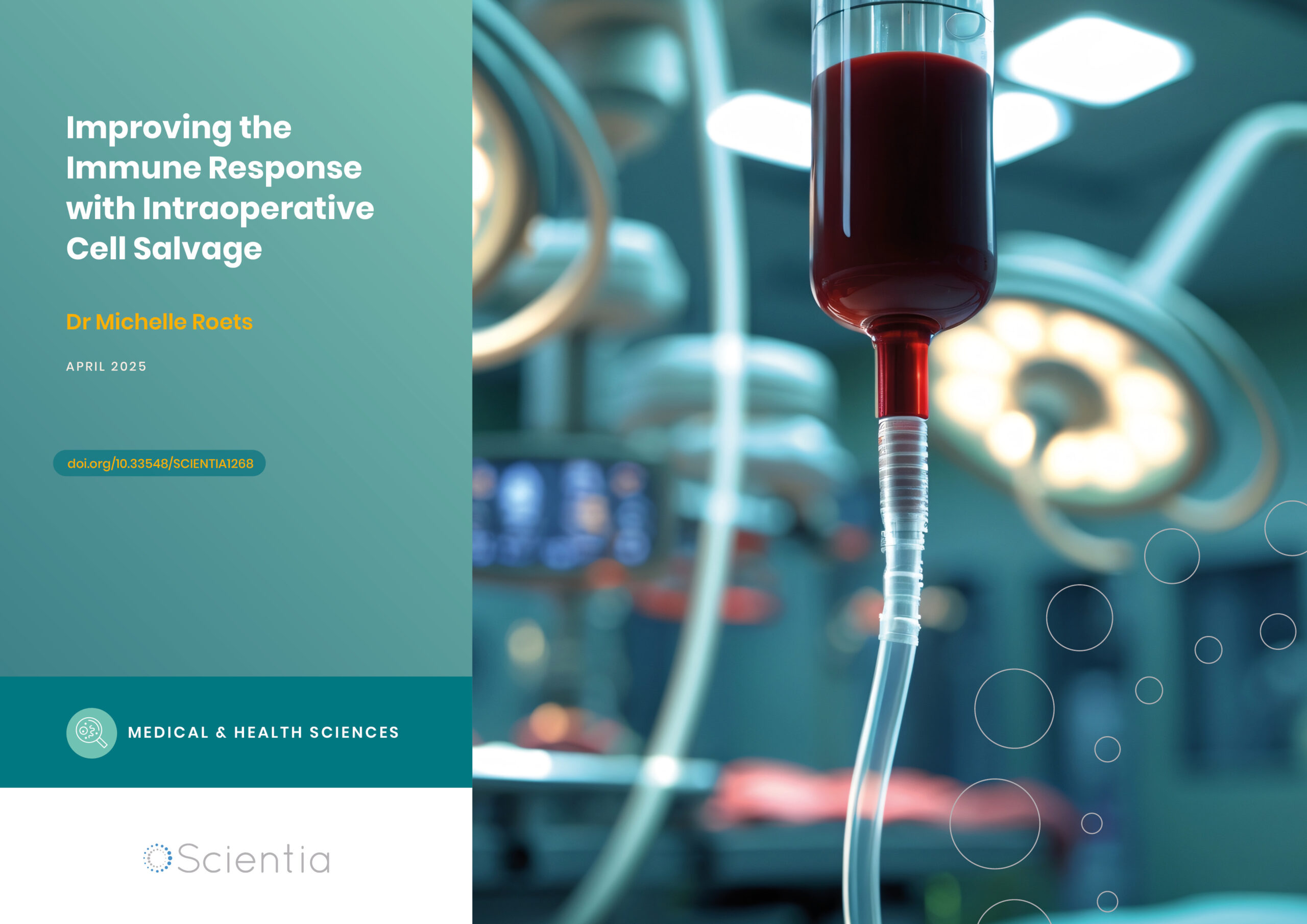Professor Ramani Ramchandran | The Fascinating Roles of Cilia in Brain Blood Vessel Vitality
Delving into the intriguing realm of brain blood vessel development and the role of specialised cells is a challenging but critical step in better understanding neuro-vascular diseases in both children and adults. Professor Ramani Ramchandran, from the Medical College of Wisconsin in the USA, investigates cilia in the brain vasculature. It turns out that these microscopic hair-like projections found on the surface of certain types of cells have a far more interesting role to play in brain health than was initially thought.
The Specialists: Ciliated Cells
Throughout the body, there are many different types of specialised cells. These cells are adapted for a particular function, from elongated nerve cells that allow the passage of an electrical impulse to red blood cells loaded with haemoglobin to carry oxygen. Ciliated cells can be found on the inner surfaces of blood vessels, facing into the blood flow. These specialised cells are coated with tiny, hair-like projections that work as sensors to monitor the flow of blood and play a part in cell communication, known as signalling. Recent research has shined the spotlight on these microstructures, indicating that they may have a far more significant role than previously realised and could be utilised in novel ways to help patients with brain injuries.
Professor Ramani Ramchandran, President and Founder of the company CIAN Incorporated, carries out his research at the Children’s Research Institute Developmental Vascular Biology Program at the Medical College of Wisconsin in the USA. Along with colleagues, he explores the role of cilia in the blood vessels of the brain. He focuses his work on understanding the growing vasculature of the developing brain of embryos, and has also investigated how cilia are formed in brain blood vessels, as well as their exciting role as a predictor for vascular health.
Exploring Cerebral-vascular Development
In earlier work, the researchers investigated the distribution of cilia during the development of the brain blood vessels of zebrafish, a tiny freshwater fish from the Ganges river in India. Professor Ramchandran explains that vasculogenesis – the growth of new blood vessels – occurs in the same way in both zebrafish and mammalian embryos. This process involves embryonic cells, known as angioblasts, coming together to form the endothelium, the inner lining of the blood vessels. Once blood starts flowing through these new vessels, a more elaborate system begins to form through a process called angiogenesis, where new blood vessels sprout from the existing ones. These new vessels carry life-giving blood to nourish the growing brain cells of the embryo, ensuring the healthy development of the central nervous system.
Defects in the creation of these new blood vessels in the brain vasculature can lead to abnormal connections between vessels, weakening and the loss of integrity of the vessels, and a deterioration of the brain cells. As such, identifying mediators of the process of early brain vasculature growth underpins a better understanding of developmental vascular diseases. To this end, the team conducted a review of the literature to consolidate the knowledge of cerebral vasculature and the role of endothelial cells in the brain, and to inform the next steps for their research.

Vasculogenesis and the Zebrafish
Endothelial cells, which line the inside surface of blood vessels, use their cilia to sense blood flow, like seaweed being pushed about by ocean currents. However, there are many critical steps during the initial formation of the endothelial cells and blood vessels that occur prior to blood flow. The role of the cilia in regulating these critical first steps in the formation of the brain vasculature has, for some time, remained unclear.
Using zebrafish, Professor Ramchandran and colleagues investigated the involvement of the cilia during these crucial early stages of blood vessel formation. They found that the cilia appeared before the heart began to beat and blood flow occurred in the brain, and linked the cilia to the formation of the vascular lumen, the space in which the blood will eventually flow.
These key findings suggest a functional role for the cilia in the brain’s endothelial cells, linked with the development and modelling of the early vasculature. Furthermore, by removing the genes necessary for the production of cilia, the researchers confirmed that intracerebral haemorrhages (i.e., bleeding in the brain) occurred, indicating that cilia are vital for the stability of the blood vessels.
Investigating Vascular Stability
The next step for the researchers was to find out how cilia are responsible for the stability of the blood vessels. Professor Ramchandran stresses that understanding the mechanism by which cilia function will progress our understanding of brain haemorrhages that can occur in the embryonic brain, leading to developmental problems and, sadly, in some cases, preterm death. Weakened blood vessels can develop an aneurysm, where they balloon and burst, leading to haemorrhages. Being able to maintain the integrity and stability of the growing blood vessels is essential for healthy development.
Professor Ramchandran explains that the underlying mechanisms for the formation of the cilia, known as ciliogenesis, are not fully understood, hypothesising that brain vasculature ciliogenesis and the mechanisms controlling the process are vital for brain vascular stability. The team proceeded to investigate using multiple approaches, including the zebrafish again and various cell cultures. By manipulating the production of a number of proteins by switching certain genes on and off, they deduced the involvement of a particular set of molecules, the PAK2-ARL13B proteins in brain endothelial cell ciliogenesis. They also identified a critical time in a developing embryo when ciliogenesis was important for promoting vascular stability. Professor Ramchandran explains that these PAK2-ARL13B proteins hold a vital role in ciliogenesis and in promoting vascular stability.

Cilia: Flow-Sensors
In another series of experiments, Professor Ramchandran and his team investigated cilia as biological markers for vascular health. Cilia were already widely recognised as low-flow sensors, and if blood flows with too much force it produces high shear stress. In this situation, the cilia are lost from the endothelial cells. This physical removal of cilia is called deciliation and is considered the main mechanism of cilia loss in mammalian endothelial cells. The researchers hypothesised that deciliation by any changes in shear stress would likely result in an increase in the amounts of cilia-related proteins in the circulation.
To test this hypothesis, the researchers performed a set of shear stress experiments mimicking a range of blood flow conditions from low to high shear stress in both a zebrafish model and in human cells in vitro. Predictions were confirmed – ciliary fragments in the fluid washed away from the human cells, and fewer cilia were left on the surfaces of the zebrafish cells when sheer stress was increased.
In continuing this fascinating work, the researchers then analysed blood samples from patients with sickle cell disease, a condition that is known to cause vascular damage.
Predicting Vascular Health
The team wanted to confirm the real-world relevance of this work by using blood samples from patients. Sickle cell disease is a genetic condition that affects red blood cells. Red blood cells grow sickle-shaped, so they do not carry oxygen properly and can clump together easily to block blood vessels, resulting in stroke and damage to the vessels, as well as an array of other serious health problems.
Professor Ramchandran described how they compared blood from patients with sickle cell disease and healthy patients, and found that the sickle cell patients had far higher levels of ciliary proteins in their blood plasma. The sickled red blood cells also had high levels of ciliary proteins covering their surfaces after sticking to brain endothelial cells. These brain endothelial cells then showed elevated levels of reactive oxygen species, a group of chemicals highly damaging to cells. Their report concluded that cilia and ciliary proteins, which are detected in altered-flow conditions, could be used as a biomarker of endothelial damage and, therefore, as a predictor of vascular health.
A Closer Look at Brain Endothelial Cells
In more recent work, Professor Ramchandran and his colleagues examined how cilia are formed in brain endothelial cells. They used a technique called immunofluorescence analysis, which revealed that endothelial cells lining the smallest blood vessels of the brain featured two cilia, whereas most endothelial cells found elsewhere in the body just have a single primary cilium. They were able to confirm their findings in human cells, discovering the same result in mouse cells. Professor Ramchandran highlights that the second cilium on brain endothelial cells arises from the unique way these cells grow during the cell division process called mitosis. Pairs of structures within the cell, mother and daughter centrioles, help to organise mitosis. Normally, primary cilium is thought to arise from mother centriole. However, unusually, in the primary brain endothelial cells, both mother and daughter centrioles seem to have a role in ciliogenesis, resulting in the production of two cilia.
Professor Ramchandran and his colleagues are making huge leaps in unravelling the intricate tapestry of the human brain vasculature and its formation. Their research into cilia as a biomarker for changes in blood flow was foundational to the formation of CIAN Incorporated. Currently, they are developing a testing kit for cilia analysis, which could help determine vascular health with potential application across brain injury care. By contributing to a much better understanding of the states of vascular compromise in different clinical situations, Professor Ramchandran is paving the way for new avenues of research with the potential to revolutionise brain injury care.
SHARE
DOWNLOAD E-BOOK
REFERENCE
https://doi.org/10.33548/SCIENTIA1090
MEET THE RESEARCHER

Professor Ramani Ramchandran
Children’s Research Institute
Medical College of Wisconsin
Milwaukee, WI
USA
Professor Ramani Ramchandran completed his PhD in Biochemistry and Molecular Biology at Augusta University in 1997. He undertook a research fellowship at Harvard Medical School from 1997 to 2002 and then a position at the National Institutes of Health until 2006. He joined the Medical College of Wisconsin in 2007, where he has risen through the academic ranks to the position of professor in the Department of Pediatrics, Children’s Research Institute. He holds secondary appointments in the Department of Physiology, the Clinical and Translational Science Institute, and a joint position in the Biomedical Engineering Department and Marquette University. In 2023, Professor Ramchandran founded CIAN Inc., a company dedicated to developing techniques to use cilia as a biomarker for altered blood flow. He has received significant funding to support his research and has published extensively.
CONTACT
E: rramchan@mcw.edu
W: https://www.mcw.edu/departments/cell-biology-neurobiology-and-anatomy/people/ramani-ramchandran-phd
KEY COLLABORATORS
Dr Kevin Rarick, Assistant Professor in the Department of Pediatrics at the Medical College of Wisconsin (MCW), is a cerebrovascular physiologist and collaborates to investigate the role of ciliary biomarkers in diagnosis and prognosis post-injury using preclinical brain injury models.
Dr Karthikeyan Thirugnanam, Dr Ankan Gupta, and Dr Shubhangi Prabhudesai at MCW, members of the Ramchandran laboratory, are vascular biologists that utilise primary cell culture, mice, and zebrafish model systems, respectively, to address questions in cilia biology related to vascular stability.
Drs Ronny Otero and Matthew Chinn, emergency room clinicians at Froedtert Hospital, Wisconsin, collaborate to translate the cilia biomarker work into clinical decision-making workflow in the emergency department and develop ciliary biomarkers for clinical use.
Drs Michael McCrea, Lindsay Nelson and Timothy Meier, colleagues at MCW and leading experts on traumatic brain injury, are collaborating on developing ciliary biomarkers for clinical use.
Dr Ashraf Mohieldin, Assistant Professor at California North State University, a ciliary proteomic expert who has characterised ciliary extracellular vesicles and their role in cilia biology, collaborates to identify ciliary protein targets for biomarker application.
Dr Surya Nauli, Professor at Chapman University, an expert on flow-mediated renal and vascular cilia biology and signalling, is collaborating to identify key mechanisms associated with flow-mediated deciliation.
Dr Sean Palecek, Professor at the University of Wisconsin, Madison, an expert in induced pluripotent stem cell-derived models associated with blood-brain-barrier research, collaborates to identify the role of endothelial cilia in barrier formation using in vitro model systems.
Dr Rahima Zennadi, Associate Professor at the University of Tennessee Health Sciences Center, a haematology researcher with expertise in sickle cell blood research and its role in cerebrovascular injury, is collaborating to develop ciliary biomarkers for sickle cell disease diagnosis and prognostication.
FURTHER READING
K Thirugnanam, A Gupta, F Nunez, et al., Brain microvascular endothelial cells possess a second cilium that arises from the daughter centriole, Frontiers in Molecular Biosciences, 2023, 10, 1250016. DOI: https://doi.org/10.3389/fmolb.2023.1250016
A Gupta, K Thirugnanam, M Thamilarasan, et al., Cilia proteins are biomarkers of altered flow in the vasculature, JCI Insight, 2022, 7(6), e151813. DOI: https://doi.org/10.1172/jci.insight.151813
K Thirugnanam, S Prabhudesai, E Van Why, et al., Ciliogenesis mechanisms mediated by PAK2-ARL13B signaling in brain
endothelial cells is responsible for vascular stability, Biochemical Pharmacology, 2022, 202, 115143. DOI: https://doi.org/10.1016/j.bcp.2022.115143
A Gupta, KR Rarick, R Ramchandran, Established, New and Emerging Concepts in Brain Vascular Development, Frontiers in Physiology, 2021, 12, 636736. DOI: https://doi.org/10.3389/fphys.2021.636736
S Eisa-Beygi, FM Benslimane, S El-Rass, et al., Characterization of Endothelial Cilia Distribution During Cerebral-Vascular Development in Zebrafish (Danio rerio), Arteriosclerosis, Thrombosis, and Vascular Biology, 2018, 38(12), 2806–2818. DOI: https://doi.org/10.1161/ATVBAHA.118.311231

REPUBLISH OUR ARTICLES
We encourage all formats of sharing and republishing of our articles. Whether you want to host on your website, publication or blog, we welcome this. Find out more
Creative Commons Licence (CC BY 4.0)
This work is licensed under a Creative Commons Attribution 4.0 International License. 
What does this mean?
Share: You can copy and redistribute the material in any medium or format
Adapt: You can change, and build upon the material for any purpose, even commercially.
Credit: You must give appropriate credit, provide a link to the license, and indicate if changes were made.
SUBSCRIBE NOW
Follow Us
MORE ARTICLES YOU MAY LIKE
Epigenetic Mysteries Unravelled: The Zinc-Finger Proteins
Exploring the complex mechanisms of cell development processes and DNA structure is critical to understanding how certain diseases, such as cancer, can arise. Professor Danny Reinberg and Dr Havva Ortabozkoyun from the University of Miami in Florida, USA, work to reveal the epigenetic mechanisms at play during cell division and development and, in turn, disease processes. Together, they are discovering new protein molecules involved in genome organisation, deepening our understanding of how cancers and other related conditions can develop.
International Isocyanate Institute | TDI-induced Asthma: Reanalysing Data to Find Hidden Trends
Even if you’ve never heard of them, you’ve used polyurethanes. Producing them requires toluene diisocyanates, which may/can induce asthma when inhaled. A 5-year study claimed to conclude that cumulative TDI exposure over time was indicative of asthma incidence. However, a reanalysis by a team at the International Isocyanate Institute points the finger instead at the frequency of unprotected high-exposure events, like accidental spills or plant maintenance. This finding guides the way for future advances in worker safety.
Training Deep Learning AI to Predict microRNA-Gene Interactions
Non-coding microRNAs (miRNAs) have important regulatory functions but are also implicated in various diseases. Mr Seung-won Yoon, PhD candidate at Chungnam National University, Republic of Korea, is training deep learning AI models to predict miRNA-gene associations. His research has implications for understanding disease pathogenesis, particularly cancer, and repurposing drugs for untreatable diseases.
Improving the Immune Response with Intraoperative Cell Salvage
Undergoing surgery comes with many risks. Numerous factors can influence the outcome, from the choice of anaesthesia to the type of operation. Long and complex procedures can require blood transfusions, which introduce yet another risk factor to the mix. Dr Michelle Roets from the Royal Brisbane and Women’s Hospital in Queensland seeks to help mitigate these risks through intraoperative cell salvage, a different type of blood transfusion which could revolutionise surgical outcomes.





